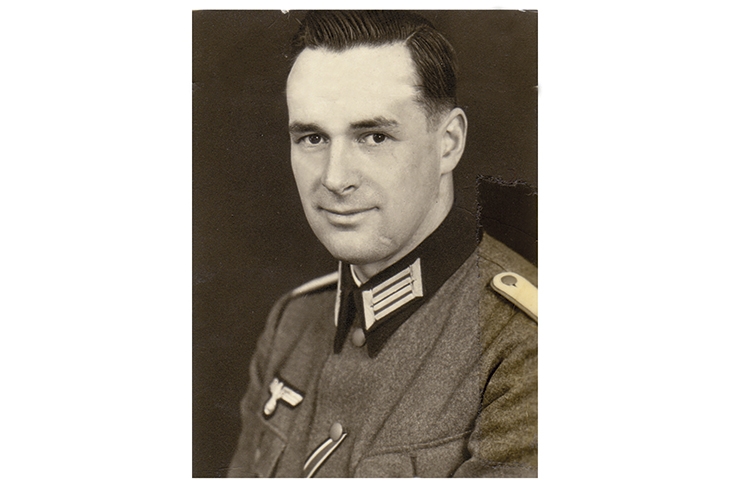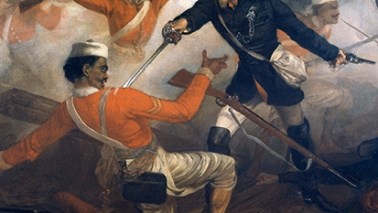In October 2011 Daniel Lee was at a dinner party at which a Dutch woman told a disturbing story. It concerned an armchair that her mother had recently taken for re-upholstering. The chair was something of a family treasure. As a child growing up in Amsterdam, the woman herself had always sat on it as she did her homework and it featured in countless family photographs. When her mother returned to pick up the chair, however, the upholsterer had addressed her in outrage. He did not work for Nazis, he said. The loved chair, it turned out, contained a hidden cache of SS documents, all stamped with swastikas. The woman at the party felt contaminated by what her mother had told her: throughout her childhood she had been in close proximity to these objects from the Fascist past. The upholsterer assumed that theirs must have been a Nazi family, although, in fact, the chair had been bought by her mother while she was a student in Prague in 1968.
As a historian of the Holocaust, Lee was immediately grabbed by the incident, which seemed almost a metaphor for the hidden presence of the wartime past. He decided to investigate the history that lay behind those papers: to take a random individual — the SS officer Robert Griesinger, whose name and photo were there on the documents — and to reconstruct his life. Lee’s journey took him to the houses that Griesinger had lived in, to the archives where his actions were recorded, and also to the man’s surviving children, who co-operated and added their memories. The result is an intriguing, honest and superbly documented portrait of what could be called an ‘unremarkable’ SS life.
In the perverted domesticity of everyday Nazism, the SS were urged to push prams and change nappies
Robert Griesinger was born in 1906 to a wealthy Stuttgart couple and he enjoyed a pampered youth. His biographer does an excellent job of describing his position in an old establishment family in Weimar Germany, a group who were angered and humiliated by their nation’s defeat in the Great War. As a boy, Griesinger was a member of the conservative Bismark Youth, and at Tübingen University he joined an aristocratic duelling club, whose badge of honour — the Schmiss — was a scar on the cheek.
The focus of this community was Germany’s former greatness: they marched, and they marked the anniversaries of former triumphs. He and his family were monarchists, close to the old King of Württemberg; and while they were certainly anti-Semitic, Nazism, at first, held no appeal. Lee thinks it highly unlikely that Griesinger voted for Hitler in 1933. All the same, in September of that year, with the Nazis in power, Griesinger joined the SS.
Why did he do so? We never get a deep sense of Griesinger’s inner workings, but Lee concludes that his main motivation was self-interest. Having qualified as a lawyer, he was working his way up the civil service, and membership of the organisation would help him along the way. But there was also conviction: he believed in race theory and militarism and evidently embraced the cruelty of the regime.
All the same, Griesinger was not a very active Nazi and he never rose far in the SS. For him, the organisation was the equivalent of a social club. Again, Lee does a fine job of painting the social picture. In Stuttgart there were compulsory SS meetings every Wednesday and Friday evening, plus a full Sunday once a month, where the programme included concerts, lectures, shooting practice and group discussion. When Griesinger married, his wife joined the Sippengemeinschaft or ‘community of kinship’. The same thing happened with their children when they were born.
At no point did Griesinger work actively for the SS. He remained a civilian, first in the civil service, then in the police force, then in the Foreign Office, and finally as a lecturer at an agricultural university. When the war broke out, he served in the Wehrmacht (rather than the SS) on both the Western and the Eastern Front. After serious injury in the battle for Kiev, he became part of the occupying administration in Prague, which is where he died — probably shot — at the end of the war. The exact moment at which he concealed his documents in the seat of the armchair is lost to history, although it is clear that his body was eventually dumped in a mass grave. One can imagine that final moment of panic when angry Czech crowds or Soviet soldiers surrounded his building: a last, desperate attempt to hide the past.
This is, on one level, an unspectacular story. Griesinger cannot be linked directly to any atrocities, and as a character he was lazy and rather stupid, but not, it seems, personally cruel. Yet, as Lee makes clear, he was more than a simple cog in the Nazi machine. As a police lawyer, he worked above the prison cells where men and women were routinely tortured. Lee traces the movements of the 25th Infantry Division, in which Griesinger served, and details its mass-killing of Jews and other civilians. At one point the division moved through the small shtetl in the Ukraine that was the home of a branch of Lee’s own family, wiping it out. As Lee reflects: ‘Even if Griesinger did not personally round up and execute my ancestors and other Jews, he was in close proximity to their killers.’ Later, in Prague, Griesinger was active in the forced labour programme, selecting Czechs from factories who would be sent to Germany to work.
The strength of Lee’s book is the way these facts of history are twinned with the perverted domesticity of everyday Nazism. SS men, for example, were encouraged to push prams and change nappies. Before he married, Griesinger’s fiancée, like all SS wives, was subjected to extensive gynaecological examinations, including checks on her menstruation, to be sure that she would produce the minimum four Aryan children. It is the domestic focus that Griesinger’s children say they remember. They claim they knew nothing of their father’s SS membership, and recall only the family Christmases and his care for the family dog. The armchair stuffed with hidden swastikas is an apt symbol for that weird and disturbing double life.






Comments